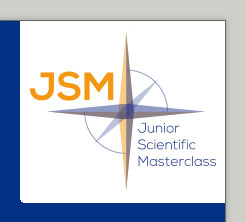Onderzoeksproject aanpassen
Projecten zijn uitsluitend aan te passen door bij het project behorende onderzoekers.
Geef via het uitrolmenu aan welke onderzoeker u bent. Nadat op u de button 'Edit project' heeft geklikt, wordt automatisch een e-mail verstuurd naar het e-mailadres van de onderzoeker die u heeft gespecificeerd.
In deze e-mail staat een link waarmee u het project kunt wijzigen.
Project properties
| Title | The incidence of contralateral breast cancer in women with a BRCA1/2 mutation: the role of family history |
|---|---|
| Keywords | breast cancer BRCA1/2 Personalized medicine |
| Researchers |
Prof. dr. G.H. de Bock L. Jansen Dr. J.C. Oosterwijk Dr. B. van der Vegt |
| Nature of the research | Retrospective cohort analysis |
| Fields of study | epidemiology oncology genetics |
| Background / introduction |
|---|
|
In West-Europe and North-America breast cancer is the most prevalent malignant disease. About 5-10% of these cases are due to a mutations in the breast cancer genes (BRCA1 and BRCA2). Female carriers of these mutations have a lifetime risk up to 80% to develop breast cancer, and up to 60% develop ovarian cancer and an increased risk of contralateral breast cancer of about 2-3 % per year. (Basu, 2015). Preventive contralateral mastectomy is a strategy to reduce this risk of a contralateral breast cancer. A well-known risk factor enhancing this risk is having a primary breast cancer before the age of 40. Other mentioned risk factors enhancing this risk are related to the treatment of the primary breast cancer, such as chemo- and/or radiotherapy (Drooger, 2015). A factor that has not been studied before, but is likely to be of relevance, is the type of family history for breast cancer (Van der Kolk, 2010; Teixeira, 2015). Having more detailed information on the risk to develop contralateral breast cancer in women with a BRCA1/2 mutation might help women and their doctors to improve the decision making regarding the choice and timing for preventive contralateral mastectomy. |
| Research question / problem definition |
|---|
| What is the predictive value of having a family history for breast and ovarian cancer at the time of the primary breast cancer on the incidence of contralateral breast cancer in women with a BRCA1/2 mutation? In addition, does this predictive value depend on the strength of the family history or the mutation position? |
| Workplan |
|---|
|
Data from women with a BRCA1/2 mutation and a diagnosis of breast cancer will be used. The first source of data will be the database from our family cancer clinic (MOC database) at the UMCG. In this database women are included who received genetic BRCA testing and who were diagnosed with a mutation, from about 1994 up till now. In this database there are data from at least 481 women with a BRCA1/2 mutation and a diagnosis of breast cancer, of which 93 have a second breast cancer (most will be contralateral; figures assessed in 2011). For these women, data has to be collected regarding the family history of cancer (last update was 2011). For the follow-up data we will use data from our family cancer clinic (MOC database) and data from PALGA (i.e. a national pathology database), which will be accessed by the department of Pathology. For the analysis, a database containing the family structure of the included women will be developed. Survival analyses will be performed to estimate the probability for the occurrence of contralateral breast cancer given several definitions of family history of breast cancer (e.g.: breast cancer only versus breast and ovarian cancer; or breast cancer before age 50 versus no breast cancer before age 50) and mutation position (inside OCCR versus outside OCCR based of definitions of Thompson and Rebbeck). |
| References |
|---|
|
Basu NN, Ingham S, Hodson J, Lalloo F, Bulman M, Howell A, Evans DG. Risk of contralateral breast cancer in BRCA1 and BRCA2 mutation carriers: a 30-year semi-prospective analysis. Fam Cancer 2015; 14: 531-8. Drooger JC, Akdeniz D, Pignol JP, Koppert LB, McCool D, Seynaeve CM, Hooning MJ, Jager A. Adjuvant radiotherapy for primary breast cancer in BRCA1 and BRCA2 mutation carriers and risk of contralateral breast cancer with special attention to patients irradiated at younger age. Breast Cancer Res Treat 2015 Oct 14. [Epub ahead of print] Rebbeck TR, Mitra N, Wan F, et al. Association of type and location of BRCA1 and BRCA2 mutations with risk of breast and ovarian cancer. JAMA;313:1347-61. Teixeira N, Mourits MJ, Vos JR, Kolk DM, Jansen L, Oosterwijk JC, Bock GH. Ovarian cancer in BRCA1/2 mutation carriers: The impact of mutation position and family history on the cancer risk. Maturitas 2015; 82: 197-202. Thompson D, Easton D; Breast Cancer Linkage Consortium. Variation in cancer risks, by mutation position, in BRCA2 mutation carriers. Am J Hum Genet 2001;68:410-9. Van der Kolk DM, de Bock GH, Leegte BK, Schaapveld M, Mourits MJ, de Vries J, van der Hout AH, Oosterwijk JC. Penetrance of breast cancer, ovarian cancer and contralateral breast cancer in BRCA1 and BRCA2 families: high cancer incidence at older age. Breast Cancer Res Treat 2010;124:643-51. |


